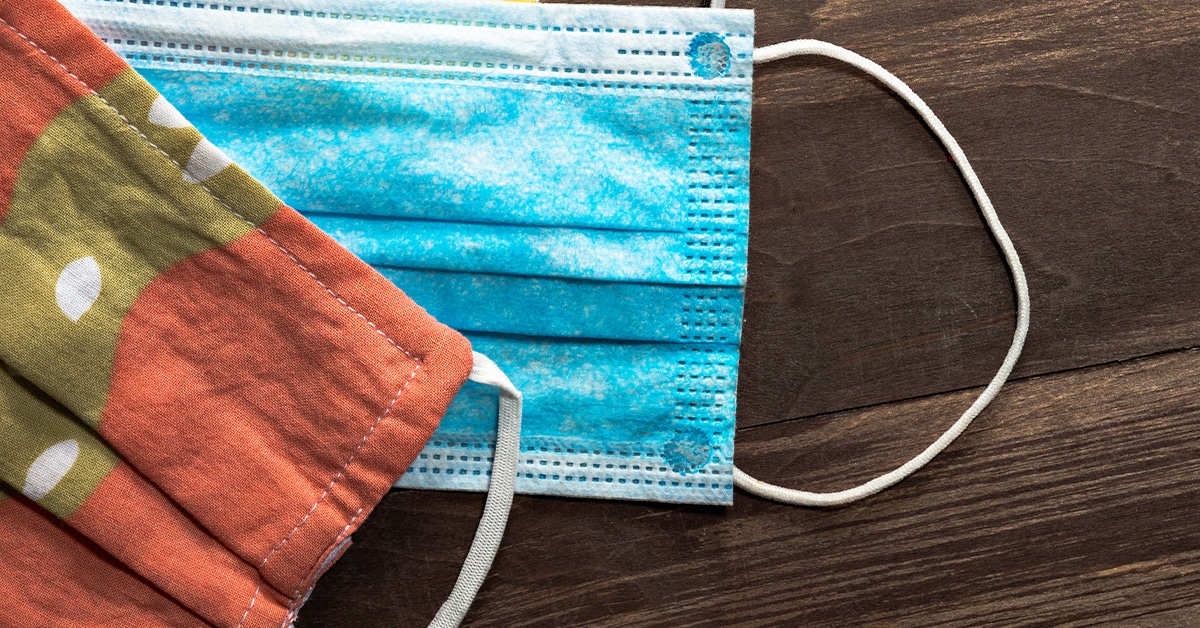
23
Dec
Medical Face Masks vs. Cloth Face Masks
The COVID-19 pandemic has made face masks a common reality of society. Currently, there are many masks that can be found for purchase, all with the basic goal of protecting one’s self and others from viruses, particularly the SARS-CoV-2 virus that causes COVID-19. However, many people have been questioning whether or not cloth face masks provide the same level of protection
As you walk around, it is easy to notice many different types of masks. Many people are wearing cloth face masks, often with different colors and designs. Others are wearing medical face masks (also known as surgical masks) that come in a variety of colors, but are commonly seen in blue and white. Is there a difference between the two types? Let’s examine that the two in detail.
How do the Different Types of Mask Work?
The goal of cloth face masks is to trap droplets that are expelled when the person wearing it talks, coughs, or sneezes. As research began to show that the primary mechanism for transferring COVID-19 was through aerosolized droplets, this became important. By asking people to wear masks, the likelihood of transmission is decreased because more droplets carrying the SARS-CoV-2 virus are trapped by the mask. However, the cloth mask itself provides relatively little protection for the wearer as it cannot effectively filter particles the size of a virus. This is due to the lack of filtration media in the mask to prevent exposure to large particles and splashing.
Meanwhile, medical face masks are loose-fitting masks that are designed to protect the person who wear’s it from contact with droplets, splashes, and sprays. This is the main reason these masks are used in surgical settings. Medical masks also protect others by reducing the exposure to saliva and other respiratory particles when the wearer talks, coughs, or sneezes. Thus, a medical mask offers similar protection against a person transmitting the virus to others while also providing protection for the wearer against contracting the virus.

What are the Masks Made From?
Cloth face masks are made from a wide variety of materials; however, the most common fabric used is tightly woven cotton. There are certain things that make some cloth masks more effective than others. These include the tightness of the fabric and the number of layers. However, even tightly woven cotton is fairly porous for small particles and many cloth masks are single or double layered.
Medical face masks are constructed in three specific layers. All layers are made from polypropylene, a plastic polymer. The inner and outer layers are made from nonwoven spun-bonded polypropylene while the middle layer is made from melt-blown polypropylene. The spun-bonded layers are engineered for strength and durability while the melt-blown layer has excellent wicking and barrier properties. Medical masks also have an adjustable nose bridge consisting of a plastic covered wire to provide enhanced fit and comfort. They also have elastic ear straps which ensure a more customized fit.
Ultimately, the difference is that medical face masks have a number of benefits in their structure. One is that all medical masks have three layers, which enhance their effectiveness for preventing the wearer from breathing in viral particles or breathing them out into the air. Additionally, the middle layer is specifically designed as a strong barrier, providing greater protection and filtration. Medical face masks made in the U.S. are also reliably made form quality materials, making them a frequent choice for commercial usage.
Which Type is More Effective?
From what has been discussed thus far, it appears that medical face masks would be more effective than cloth face masks. In fact, medical masks are certified as personal protective equipment and used in health care settings due to this property. These masks typically have an ASTM 1, 2, or 3 rating However, cloth masks also provide some degree of protection against viral transmission. So which type is most effective?
A number of studies have been conducted to address this, finding that medical masks are more effective in preventing viral transmission than cloth masks. For example, a study published in the BMJ medical journal assessed the effectiveness of medical face masks and cloth face masks against contraction of an influenza like respiratory viruses. This study found that viral transmission was significantly higher in cloth masks. Penetration of cloth masks by particles was noted at 97% while penetration of medical masks was only 44%.
Takeaways
Ultimately, there are a number of takeaways from this comparison:
-
Cloth face masks have been shown to be less effective in preventing transmission than medical face masks.
-
Medical face masks have three layers of protection with materials designed for prevention of transmission.
-
Medical face masks have extra features for comfort.
-
Cloth face masks do not adhere to the same quality standards as medical face masks made in the U.S.